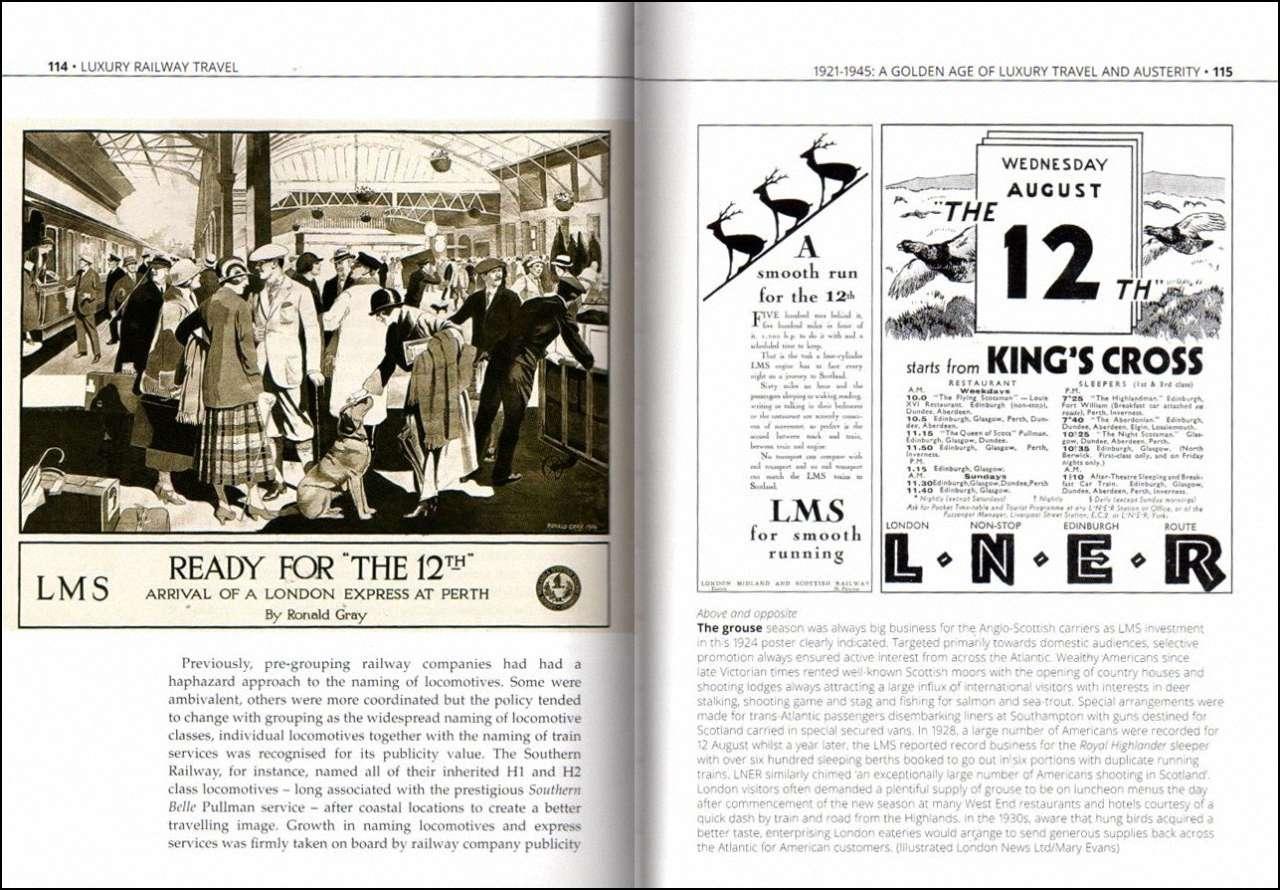This book describes how British railway companies developed luxury rail travel to satisfy demand from the burgeoning upper and middle classes and wealthy overseas visitors, particularly Americans.
Published in October 2019, this hardback from publisher Pen & Sword and written by Martyn Pring measures around 17.78 cm x 24.77 cm, has 366 pages, and 87 colour and 49 black & white illustrations. It has a published price of £35.00, although at the time of writing it can be obtained from Amazon for £12.99.
In six chapters, the book takes the reader in a chronological sequence from 1860 to the present day, whilst four appendices describe specific parts of Britain served by luxury trains including Scotland, the West Country, Bournemouth, and Brighton.
The author is to be commended for his sub-titles that provide a good insight into the subject chapters, from Chapter 1, 1860-1900: Victorian Expansion – The Emergence of Luxury Travel through to Chapter 6, 2001-Present: The Era of the New Luxury Dining Train, which also gives brief insights into luxury trains in other countries including Germany, Japan, and Russia. Likewise, with the appendices, where Appendix 3, Pines, Chines and Perpetual Summers is a most appropriate introduction to Bournemouth, and Appendix 4, London by Sea can be no location other than Brighton.
It is clear that Martyn Pring has carried out an immense amount of research to not only chronicle the story of luxury railway travel, but also to share with the reader some of the imaginative and nostalgic posters that came out of railway companies' marketing departments.
The book is more than a collection of classic railway posters however; it gives an insight into a way of life that is sadly now lost. It is fascinating to read how the concept of luxury travel has evolved, from the nostalgic posters of the early twentieth century commissioned from top artists through to the more austere offerings of the 1950s. It tells not only the story of luxury travel, but also gives an insight into the social history that came with it.
The 12th of August, “The Glorious 12th”, was the start of the pheasant shooting season, and both the London, Midland and Scottish Railway and the London and North Eastern Railway were ideally placed to transport well-heeled passengers to the grouse moors of Scotland. Both companies spared no efforts in marketing their services as shown below.

Gleneagles Hotel in Perthshire is a luxury hotel for golfers with a worldwide reputation that was owned by the London, Midland and Scottish Railway. The company capitalised on its fame by publishing many posters extolling its virtues, such as the one below.
Between the wars, there was great rivalry between the London, Midland and Scottish Railway and theLondon and North Eastern Railway to encourage passengers to use their services to Scotland. In 1937 the London and North Eastern introduced a streamlined train ”The Coronation” between London King's Cross and Edinburgh, and commissioned some fine posters such as the ones below to celebrate its launch.
Cornwall has long had an attraction as a holiday destination, and the Great Western Railway was not slow to appreciate the advantages of marketing its attractions shown by the nostalgic posters reproduced below.
It wasn't only the London, Midland and Scottish Railway's and London and North Eastern Railway's trains to Scotland that had a monopoly on luxury travel, as the Pullman Car Company introduced its own luxury carriages on a number of other routes in Scotland, on trains of the London and North Eastern Railway in East Anglia, and on Southern Railway trains to the south coast.
Most surprisingly, as seen in the advertisement on the left-hand page below, the Metropolitan Railway also added Pullman carriages to trains between Aldgate and Verney Junction, which was a remote station in rural Buckinghamshire between Aylesbury and Bicester.
In summary, the author has produced an excellent and obviously well-researched account of the history of luxury train travel, where passengers often expected opulence, not only in the rolling stock but also in the food on board. There are many photographs, newspapers cuttings and ionic posters showing the glories of the golden age of travel that complement the text perfectly. The author has produced an excellent description of the days when luxury train travel was often an integral part of the journey, instead of the preserve of today's specialist operators. A beautifully illustrated and highly informative book that is a veritable treat for both railway enthusiasts, travel historians, and anyone who loves reading about how travelling by train was an experience in itself, rather than a means of travelling from A to B. A very enjoyable read and highly recommended.
The book is available to purchase from Amazon and from Pen & Sword.
We would like to thank Pen & Sword for providing RailAdvent with a copy of the book for review.